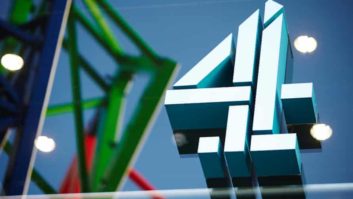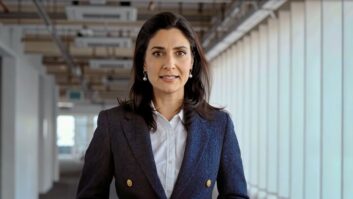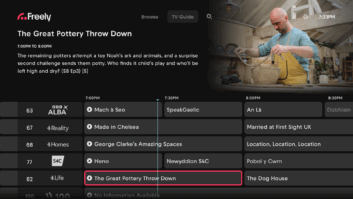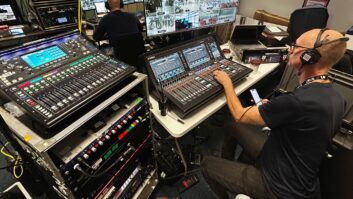Dinosaur with Stephen Fry is a new four-part documentary series that chronologically tells the definitive story of their 180 million years on Earth – from the dawn of the dinosaurs to their extinction.
The show, produced by Tinopolis Group’s Mentorn Media, and broadcast by Channel 5 in the UK, employed virtual production technology to recreate the jungles of the Jurassic period and the plains of the Cretaceous period in the middle of Manchester.
Mentorn worked with dock10 on the series, which aims to give viewers an accurate representation of a prehistoric environment.
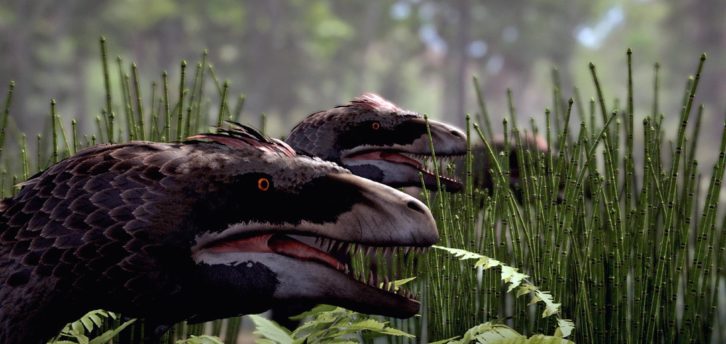
Based on the latest research, dock10 designed accurate dinosaur species to populate the landscape, with each creature brought to life via CGI and animation. dock10 also used Unreal Engine to create the hair, feather and scale details for the different dinosaur skins featured on the series. Everything was brought to life in real-time with Stephen Fry in the studio, so he could see and interact with the dinosaurs.
The team at dock10 has been creating virtual studios for a number of years, particularly around sport. It’s the home of Match of the Day, and the BBC’s recent Olympics coverage. During the pandemic, dock10 also worked with the BBC on creating a motion capture character called Clogs for its BBC Bitesize strand. It was this that started the team on the journey to the Jurassic period, explains Jonathan Harley, head of production development at dock10. “That paved the way for us starting to do animated elements within the virtual studios,” says Harley. “I’d been telling clients for years now what we can do with virtual studios. I met up with Chris Brogden, who’s the managing director of Mentorn as well as director of content for Tinopolis, I was talking about the virtues of virtual and all the different things that we could do with it. Not long after he had a meeting with Channel 5, and they had a discussion about a dinosaur programme.”
Harley says the idea of working on Dinosaur with Stephen Fry intrigued the team at dock10 a great deal as “we’d never done anything in that factual entertainment world before”.
The production was based in dock10’s HQ3, which measures 4,500 square feet. However, with the use of virtual production, the space was able to span an impressive 36 square miles. “We were able to create these environments that are kind of unlike anything we’d done before,” says Harley. “Using a virtual production studio made the production easier to plan for than a real location shoot.”
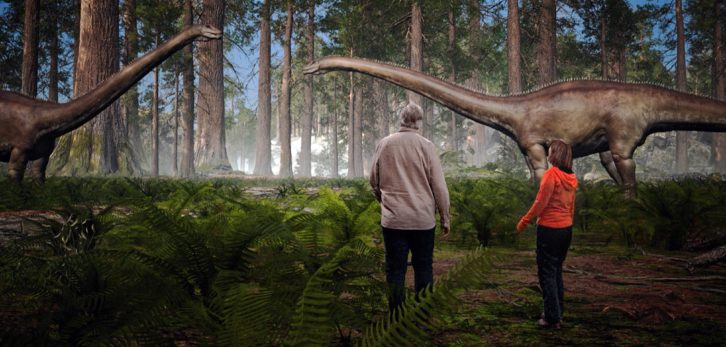
The production team used a multi-camera set-up, which Harley says meant time with Fry became less of an issue than it would have done with a single-camera plan. “We could have five cameras, with one at tree-top level, and another at the bottom of a lake,” he continues. “It allowed us a lot of creativity as well in terms of what we could do. I think that was certainly really attractive. And obviously, you can’t just go out and film real dinosaurs. So, it solved a creative problem.”
The decision to film the series with multi cameras and with real-time graphics also helped the creative team when it came to on-set production, enabling them to move content from the camera straight to the editing bay. “The camera people could see what they were working with, and because we’d pre-programmed the dinosaurs we could run those sequences again and again,” explains Harley.
“Also on the studio floor, we had a big monitor so that Stephen could see what we were doing. He could see on a screen what we were trying to achieve and what we were trying to do. Although it was certainly technically challenging, we were all learning during the process.”
Using a 36-mile canvas caused its own challenges because all of that space needed to be filled with flora and fauna that would have been around during the time period. Harley says that a key part of the pre-production process was the dialogue between Mentorn, their experts and the team at dock10. “It took quite a lot of time and a lot of back and forth,” he adds. “We would create things and they would get amended depending on what production was telling us was correct.”
“I suppose it would have been so much easier if we just said to our in-house team, go off and build your version in your head of what a ‘dinosaur land’ looks like and that’s what we’ll go with,” agrees dock10’s head of studios, Andy Waters. “But quite rightly, that wasn’t a valid thing to do. So, there was a lot of back and forth, a lot of cross-checking and getting things scientifically correct. A number of paleontologists were used to make sure that it was a proper documentary, as opposed to dock10’s virtual team coming up with their fantasy of dinosaur land.”
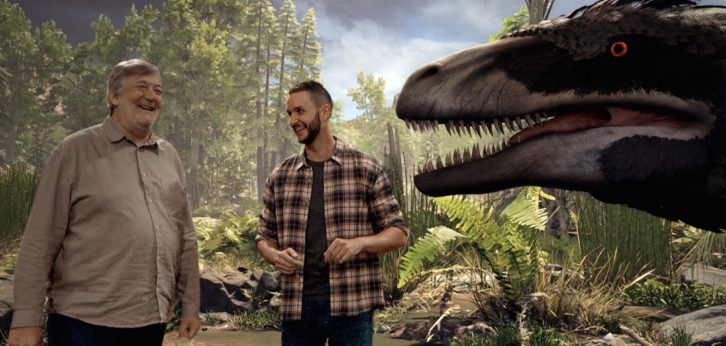
While having the experts on hand to help the team choose the correct colour of a plume of feathers, there were still some drawbacks, particularly as experts are still continuing to argue as to what’s correct and what isn’t. But, Harley says having series director David Lee on set was a huge help. “David has worked with David Attenborough and is used to that world,” he adds. “We aren’t from that world, but we do know virtual studios and multi-camera production. It was a meeting of different kinds of skill sets to do something new. And I think we all came away afterward having learned so much about each other’s areas of working.”
In terms of its own technology, dock10 spent time before the cameras began rolling on internal development work to help the team master some of the techniques they were going to have to deploy, including migrating to the latest version of the software they needed. Harley says that having the right technology in place was key to delivering the final product. “We made a non-studio show into a studio show,” he adds “If we didn’t have this technology, we wouldn’t be doing this kind of show.”
Dinosaur with Stephen Fry starts on Sunday 12th February at 7pm on Channel 5.

